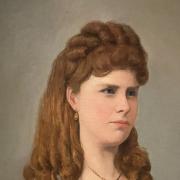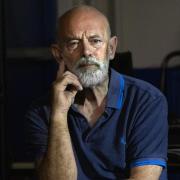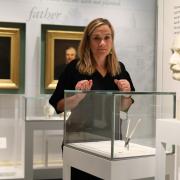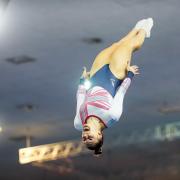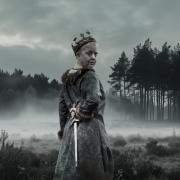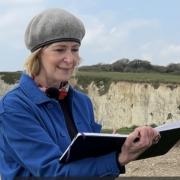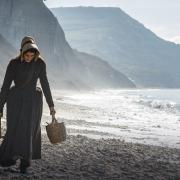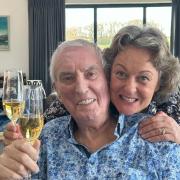Taking place every two years since 1895, the Venice Art Biennale (La Biennale di Venezia) is one of the most prestigious cultural exhibitions in the world with 800,000 visitors at the last iteration. Since the 1930s they have added Music, Cinema, Theatre and the first International Architecture Exhibition to the line-up. Many countries have permanent national Pavilions at the Biennale, built in wonderful differing styles at the events two main sites: Giardini Gardens and the Arsenale (armoury). And for each Biennale an invited international curator chooses the theme. For 2024 it is Foreigners everywhere. The Biennale lasts for six months from April to November. And, alongside the main event, the whole of Venice is taken over with fringe events in extraordinary locations. Exploring it by foot or by vaporettos (water buses) you will discover that artists have found unusual spaces - from old pharmacies and warehouses to libraries, palazzos and churches - and turned them into free fringe exhibitions. labiennale.org/en

National Pavilions dominate the Biennale, so I thought it was time to celebrate the local and the rural in a Dorset Pavilion. I wanted to share Dorset with an art world that can be very citycentric. I thought it would be fascinating for visitors to experience the contrast of a Pavilion curated to reflect Dorset’s verdant rolling countryside and rugged coastline with the magnificent opulence of Venice - with its golden-red architecture rising out of an intense blue lido. Both share so much complex history, as well as an ongoing battle with erosion of geology, of tradition, of habitat and rising tides.
The Dorset Pavilion reflects multiple facets of the county: Deep Time; Great Literary Traditions; Cinematic Dorset; Political Dorset and Visceral Dorset. We have a specially commissioned pamphlet to go with the exhibition in which Jon Woolcott author of The Real Dorset focuses on how the ‘land lies in the stories; the stories lie also in the land’. Alexandra Blanchard writes about the Bibby Stockholm, an engineless barge anchored at Portland, housing migrants until the end of January 2025, and how ‘those on board are just people, like those six Tolpuddle farm workers, who have committed no crime except that of movement and they are just holding on to hope.’

This map (pictured) is the inspiration for the Dorset Pavilion. Found at an auction house – the site of so many local treasures as they change hands and pass down through generations – it was originally created in 1622, to illustrate Poly-Olbion, a topographical poem describing Great Britain by Michael Drayton. It exquisitely captures the playfulness of the land: the map is almost empty, except for trees, ancient names, a person scything, several frolicking river nymphs, and extraordinary hills that drift to the sea. Welcome to Dorset-shere!

The writing heritage of the county is referenced in Lyme Regis artist Flora Woods’ contemporary silhouette print of her daughter (pictured). In the pre-photographic 19th century these were all the rage, and it conjures up the Dorset heroines of Thomas Hardy, John Fowles’ enigmatic French Lieutenant’s woman, or the drama played out on The Cobb at Lyme Regis in Jane Austen’s Persuasion.


Within the Dorset Pavilion there is a piece by PJ Harvey (pictured), the double Mercury Prize-winning musician and writer who grew up in West Dorset. It is a depiction of her illustration, Mallory’s Eye. Last year Harvey published a full-length book Orlam, written in the Dorset dialect with a facing-page English translation, so readers can follow the richness and subtlety of the original poem with ease. It is a remarkable coming-of-age tale of nine-year-old Ira-Abel Rawles who lives on Hook Farm in the village of Underwhelm. Harvey draws on the rituals, children’s songs, chants and superstitions of the rural West Country, and Ira-Abel creates the twin realm through which she can make sense of an increasingly confusing and frightening world.

Many Dorset-based novels have been adapted for the big screen, and Bridport is home to the UK’s only film festival From Page to Screen which celebrated the adaptation. The county has also been used as a location for numerous films. There will be Dorset inspired films screened at the Pavilion including Paul Wright’s Arcadia (2017) produced by Common Ground and the BFI, which includes rare archive footage of rural life, local celebrations, village life and lost crafts, accompanied by a film score created by Adrian Utley of Portishead and Will Gregory of Goldfrapp. Other nods to film include Jeremy Gardiner’s painting, Dancing Ledge, where the final scene of Derek Jarman’s film Jubilee takes place.


My glasswork ‘Europa’ represents a time when Dorset was connected to Europe as part of the Roman Empire. The design is based on Roman trinkets left behind by legionnaires at Waddon Fort near Beaminster (AD 49-60). ‘Europa’ was made on the island of Murano, by internationally feted master glass blower Giancarlo Signoretto (pictured)– who comes from a long-established family of Murano glassblowers.


Following in a political vein is Ellen Harvey’s painting of the enormous mausoleum at St Mary's, Holnest. Built by Erle-Drax in 1872, 15 years before his death, it was demolished in 1935, thus it qualifies for her grand scale work ‘the disappointed tourist’ where, through a website, anyone can elect ‘a no longer existing place’. Harvey then re-creates it in a painting which is then added to the huge artwork at her solo exhibition at the Turner Contemporary gallery in Margate. Harvey grew up in Dorset and her painting-based monumental artworks often reference loss, change and ruination of civilisation and our relationship to the world around us.

For 90 years Dudley Tolly lived beside Waddon Fort in a mud-floored farmhouse with Jurassic fossils embedded in its stone walls. On show for the first time, is his self-published booklet Extraterrestrials: All Is Revealed about his Dorset encounters with visitors from outer space. From outer space visitor to the fossils and specific found objects which form Will White’s work. White became attuned to finding ancient objects over a year - a micro-second in the Earth's time - which were revealed at low tide along the beach at Seatown. They form the basis of his beautifully designed installations.


Work by internationally renowned artist Andy Goldsworthy, made in collaboration with the Architectural Association’s Hook Park site in West Dorset, is included in the exhibition. It shows a fossil-like spiral made with Dorset ferns (pictured is Andy working on the piece). The project was commissioned by Common Ground, an arts and environmental charity founded in 1983 (and now based in Dorset) by Sue Clifford, Angela King and Roger Deakin. This small, grassroots organisation collaborates openly to reconnect people with nature and inspire communities to become responsible for their local environment, mainly through commissioning artists to respond to place. Together with Lower Hewood Farm’s director Alexa de Ferranti (an artist and curator), they co-produced the pamphlet for the Dorset Pavilion.

Alexa De Ferranti has made a beautiful sheepskin map of the fields (pictured) of her 45-acre organic farm on the borders of Dorset, Devon and Somerset. To enter the exhibition space and feel these underfoot is visceral. ‘The sheep offer me everything from company to supper,’ she says. ‘I recognise the expression in their strange eyes, notice their position in the flock, remember what happened to them last year and the year before and try to preserve their friendships (because sheep develop long-lasting loyalties).

A Slow Burn
The visceral in Veronica Hudson's work is implicit in the process of producing charcoal from wood on her West Dorset farm to make a creative tool for mark making. Hudson’s work is about the slowing down, listening and responding to the subtle slow movements of nature and the land around her farm. Her body’s memory of the physical work informs the marks which are drawn from years of working in the landscape


The Dorset Pavilion’s earthy elemental atmosphere is further enhanced by Fiamma Colonna Montagu’s totemic sculptures of high-fired porcelain and black and pigmented clays which contrast colours, textures and forms (pictured is Spheres Portal). The work resembles cairns and markers. Also using porcelain, Silva de Majo beautifully glazed, smooth white porcelain vessels echo natural forms and the strangeness of nature. De Majo forages plants, seeds, fungi, earth, metals and minerals to fabricate the materials and mediums for her alchemical and botanical works. Her work draws from a lifetime of observation, and the experience of living closely with nature, reflecting the interconnected web of life.

As you enter the Dorset Pavilion, a hallway hung with paintings by Ella Squirrell and Henrietta Hoyer Millar radiate the Wessex landscape. The artists capture this in very different ways. Hoyer Millar paints from the Dorset studio, bequeathed by her godmother, who was a painter. These draw on deeply familiar places of a Dorset childhood (pictured is The Lane in Spring), with a great sensitivity to the topography, the fluctuating weather and the play of light.


Amanda Wallwork’s field maps (pictured is Culliford)are an intimate, delicate and distilled reference to the archaeology and geology of place. Recent commissions include works reflecting the prehistoric ceremonial landscape of the South Dorset Ridgeway. Her immersion, extraction and abstraction from across deep time, results in a form of mapping – a collection of ideas and ideologies - symbolising an activity in time and place. Wallwork curated the B-side festival on the Isle of Portland with artist Alan Rogers whose work explores connections between coastal environments, maritime industries, and the saline air that rusts and rots surfaces. Rogers often uses pigments which are ground from the terrain surrounding the work’s creation and distilled into the essence.





